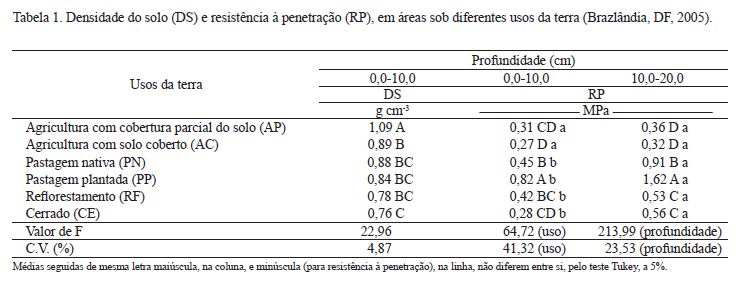The evaluation and monitoring of soil quality, in the micro-drainage basins which contribute directly to the Rio Descoberto reservoir, in the Rio Descoberto drainage basin, Distrito Federal (DF), Brazil, are necessary, due to its disordered rural occupation. Thus, this study aimed at evaluating the quality indicators of Red Latosol (RL), in micro-drainage basins located in the northern Rio Descoberto drainage basin, under diversified uses and managements: Savannah (SA), reforestation (RF), native pasture (NP), cultivated pasture (CP), agriculture with covered soil (AC) and agriculture with partial soil covering (AP). Soil density (SD) presented the lowest value for SA and the highest one for AP. The CP area showed the highest values for soil resistance to penetration, reflecting the effect of animal trampling. The highest value for organic matter (OM) was 55.5 g kg-1, in the CP, and the lowest one was observed in the AC (37.5 g kg-1), where decomposition processes are favored. The cation exchange capacity varied from 7.80 cmol c dm-3 (NP) to 9.75 cmol c dm-3 (RF), pointing out the liming effect. The values obtained for microbial biomass carbon and basal respiration showed positive effects of the grass root system in the development of microorganisms. Among the soil quality attributes evaluated, the OM and SD stood out, confirming that a more intensive agricultural activity is directly related to the quality reduction of the RL evaluated.
Soil attributes; soil management; micro-drainage basins


